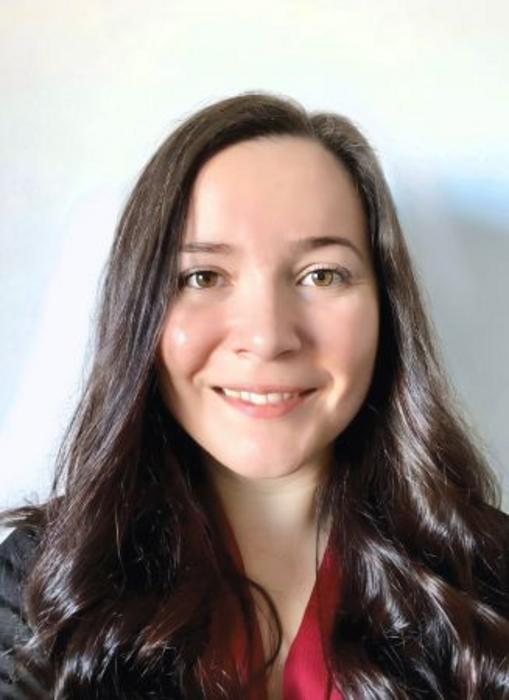The field of robotics is witnessing a significant breakthrough thanks to the innovative research of Ebru Demir, an assistant professor at Lehigh University’s P.C. Rossin College of Engineering and Applied Science. Her work centers on the development of Smart Artificial Microswimmers (SAMs), which are miniature robotic entities that mimic the locomotion of biological organisms like bacteria and human sperm. These cutting-edge devices are poised to revolutionize medical procedures, particularly in targeted drug delivery and minimally invasive surgeries, fundamentally shifting paradigms in biomedical engineering.
Demir’s groundbreaking research stems from her interest in understanding how groups of these microswimmers navigate the complex, chemically rich environments inside the human body. Just as birds benefit from flying in formations to conserve energy, Demir’s research aims to unravel how multiple microswimmers can operate cooperatively to optimize their movement in bodily fluids. This study is pertinent because the biologically relevant environments are characterized by unique rheological properties which differ significantly from those encountered in more conventional engineering contexts.
At the heart of this exploration is the question of locomotion in various fluid types—specifically Newtonian and non-Newtonian fluids—where the viscosity is not constant and changes based on the stimulus applied. Within the human body, for instance, substances like blood exhibit non-Newtonian behavior, which poses challenges for any robotic swimmer trying to deliver a therapeutic payload effectively. Recognizing the need to adapt to these intricacies, Demir utilizes a fusion of experimental techniques and numerical simulations to enhance the performance of the SAMs.
The funding awarded to Demir through the prestigious National Science Foundation’s CAREER program is a strong endorsement of her interdisciplinary approach, which merges mechanical engineering principles with elements of artificial intelligence. This amalgamation is crucial, as the SAMs are to be embedded with microcontrollers running advanced reinforcement learning algorithms. Such technology empowers each swimmer not only to make real-time decisions but also to adapt their strategies based on their proximity to one another, akin to social behavior observed in nature.
These advancements pose fascinating implications for the medical field. For example, SAMs could potentially function as the next generation of targeted drug delivery systems, where they navigate through the bloodstream to release drugs at precise locations. Such targeted delivery could radically enhance the efficacy of treatments, such as chemotherapy, by minimizing the adverse side effects associated with conventional delivery methods.
Moreover, Demir’s research could address challenges within fertility treatments, where microswimmers could improve the capabilities of compromised human sperm by facilitating their journey toward the egg. This capability underscores the dual-role nature of the SAMs as both therapeutic agents and the elucidators of underlying biological phenomena of fluid dynamics.
As the microswimmers are specifically designed to adjust to spatial formations based on their interactions with one another, the nuances of collective behavior come into play. The machine learning algorithms integrated into these robotic structures will allow them to share information and make collective decisions, bringing about a level of intelligence that was previously unimagined for such small-scale entities.
The experiments designed by Demir will utilize specially crafted fluids that emulate the non-Newtonian characteristics of human bodily fluids. This hands-on approach not only validates computational simulations through real-world results but also propels forward the understanding of microswimmer dynamics within challenging environments. The ultimate goal remains clear: finding optimal strategies that enhance collaborative locomotion for these autonomous robots.
Ebru Demir’s drive to effectuate meaningful change through her engineering expertise is commendable. Her conviction echoes the ethos of many in the scientific community – to harness technology in ways that can significantly improve human health and quality of life. The potential applications of her discoveries will not only contribute to the academic fields of engineering and robotics but will also have profound implications in medical science and patient care.
In conclusion, Ebru Demir’s research represents a nexus of technological innovation and biological understanding. By blending the principles of mechanical engineering, artificial intelligence, and biomedical applications, she is pioneering a future where microscale robots could one day act as essential tools in the therapeutic arsenal of modern medicine. The evolution of her work will undoubtedly continue to inspire new generations of researchers dedicated to harnessing engineering advancements for the betterment of society.
Subject of Research: Smart Artificial Microswimmers (SAMs) for Biomedical Applications
Article Title: Ebru Demir’s Innovative Research in Artificial Microswimmers
News Publication Date: October 2023
Web References: Lehigh University Faculty Profile, NSF Abstract
References: None
Image Credits: Courtesy of Lehigh University
Keywords
Robotics, Biomedical Engineering, Artificial Intelligence, Drug Delivery, Microswimmers, Mechanical Engineering, Fluid Dynamics, Non-Newtonian Fluids, Machine Learning, Fertility Treatments, Targeted Therapy, Ebru Demir
Tags: biologically relevant environmentsCollaborative tiny robot swimmerscooperative movement of microswimmersEbru Demir robotics researchengineering applications in healthcarefuture of robotic medical devicesinnovative robotics in medicinelocomotion in complex fluidsminimally invasive surgical techniquesrheological properties in biomedical engineeringSmart Artificial Microswimmerstargeted drug delivery systems





